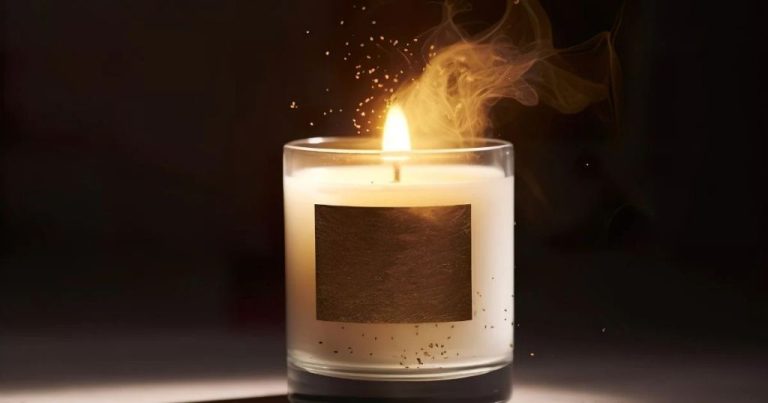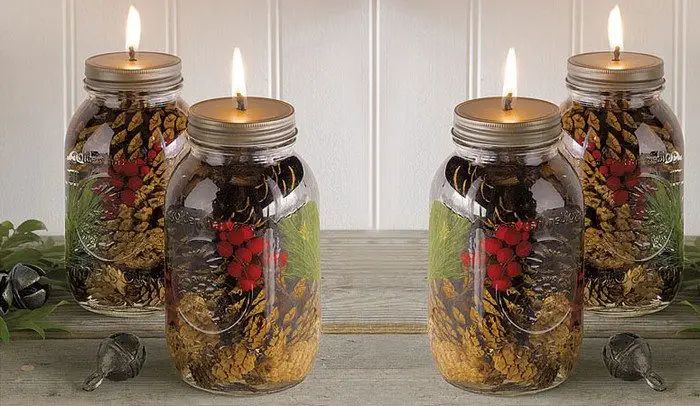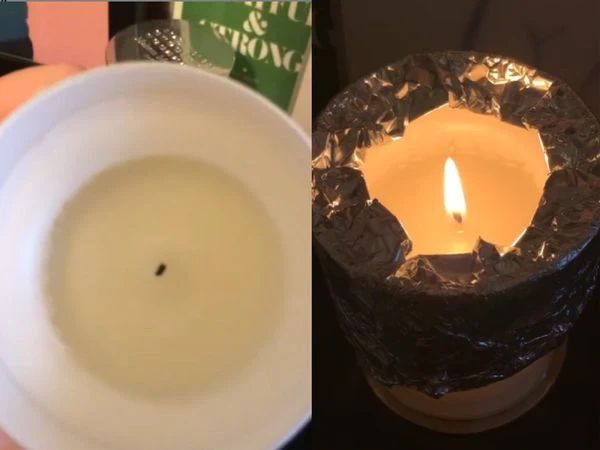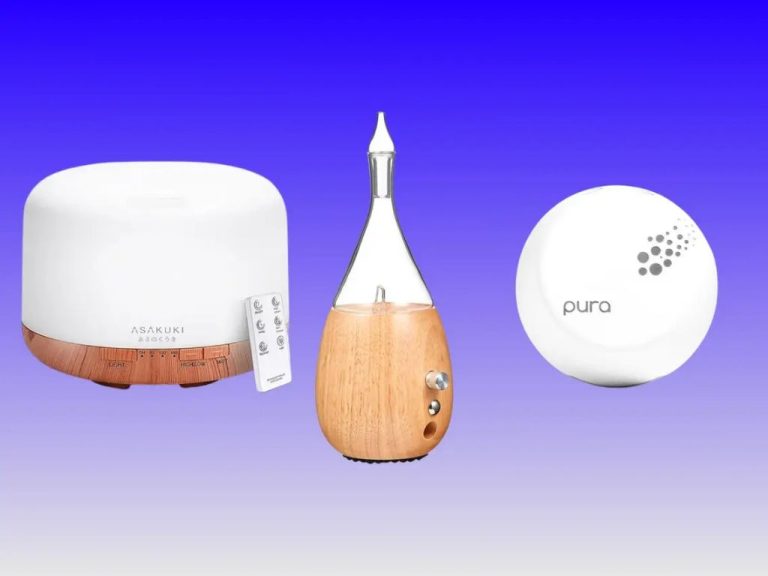Does A Candle Warmer Fix Tunneling?
What is Tunneling in Candles?
Tunneling is a phenomenon that occurs when the wax or fragrance oil in a candle burns unevenly, creating a hole or tunnel down the center of the candle. This happens when the flame only melts the wax in the middle of the candle around the wick, but leaves wax around the edges unmelted.
Tunneling is caused by an improper wick size relative to the diameter of the candle container. Specifically, it occurs when the wick is too small for the candle diameter. A wick that is too small will not generate enough heat to melt all the wax to the edges of the container as the candle burns. The melted wax pool will be too small in diameter and only melt wax in a tunnel around the wick. This leaves solid wax around the sides and bottom of the container.
Tunneled candles are problematic because they exhibit poor fragrance throw, the melted wax pool is too small and hot, and a significant amount of leftover wax goes unused if the tunneling is severe. Proper wicking is critical to prevent tunneling and allow even wax melting.
Problems Caused by Tunneling
When a candle develops tunneling, it can lead to several issues that negatively impact the candle burning experience. The main problems caused by tunneling include:
Uneven burning and waste – Tunneling causes the candle wax to melt unevenly, with the middle melting faster than the edges. This leaves wasted wax around the sides that never gets fully utilized. The uneven burn rate also leads to the candle tunneling deeper over time rather than maintaining an even melt pool across the top.
Soot buildup – The wick in a tunnel may start generating more soot since it is surrounded by walls of wax on all sides. This soot can dirty the candle vessel and lead to more smoke. Proper airflow is important for clean candle burning.
Weak scent throw – When a candle tunnels, the wax pool emitting the fragrance becomes much smaller. This means the candle won’t scent the surrounding area as strongly. The scent throw will deteriorate as tunneling gets worse over time.[1]
What is a Candle Warmer?
A candle warmer is an electric device that melts wax and disperses fragrance without an open flame (https://en.wikipedia.org/wiki/Candle_warmer). It works by using a low-wattage lightbulb, small heating plate, or tea lights to gently warm the bottom of a candle, melting just enough wax to release aroma. The melted wax is contained in the candle jar or dish.
There are several types of electric candle warmers:
- Candle warmer plates use a low-wattage heating plate to melt the bottom of a jar candle placed on top.
- Tealight warmers use the existing heat of tealights below a dish to melt a jar candle above.
- Lightbulb warmers use a low-wattage bulb enclosed in a cover to radiate warmth upwards.
- Oil warmer plates utilize the same heating plate method but are designed for essential oil diffusers.
Warmers come in various styles, shapes, colors, and materials. They offer flame-free, gentle warming to release candle fragrance without smoke, soot, or blowing out (https://www.marthastewart.com/8074527/what-is-a-candle-warmer).
Can a Warmer Fix Tunneling?
Using a candle warmer can help fix and prevent tunneling in candles. The gentle heat from the warmer melts wax at the bottom and sides of the candle, softening any hardened wax and allowing the wick to absorb more liquid wax. This helps create an even burn and melt pool when the candle is lit again. According to sources, a warmer redistributes melted wax and makes the most of a tunneled candle by releasing more fragrance.
The warming plate of the candle warmer heats up enough to gently melt wax without scorching or burning the candle. This softens hardened wax in tunneled areas so it absorbs into the wick better when you go to light the candle again. Warmers help liquefy wax and bring it to the edges and bottom of the jar, making for an ideal melt pool.1
However, severe tunneling may be too far gone for a warmer to fully repair. If the wax around the edges has fully hardened and the tunnel reaches the bottom, a warmer likely won’t be able to redistribute enough wax to create an even burn. But in many cases, a warmer can at least help maximize the life of a tunneled candle.
Tips to Prevent Tunneling
There are a few things you can do to help prevent tunneling in the first place:
Proper wicking: Make sure the wick is the right width for the candle diameter. A wick that is too wide or too narrow for the size of the candle can lead to uneven burning and tunneling. Follow the manufacturer’s recommendations for proper wicking.
Avoid drafts: Tunneling often happens when a candle is burned in a drafty area. The draft causes the candle to burn unevenly. Avoid placing candles near vents, windows, doors or fans.
Trim wicks: Always trim candle wicks to 1⁄4” before lighting to prevent excessively large flames which create soot and uneven melting. Trim the wick as needed throughout the candle’s burn time. According to the National Candle Association, trimming wicks to 1/4″ before every use allows for complete melt pool coverage and minimizes carbon buildup on the wick which helps reduce tunneling (https://www.candles.org/candle-care-articles/all-about-candle-wicks).
Fixing Tunneling Without a Warmer
There are a few methods to fix a tunneling candle without using a candle warmer. These include the spoon method, the tin foil method, and wick trimming.
The spoon method involves placing a metal spoon over the crater or hole formed from tunneling. Let the candle sit for 15-30 minutes. The spoon will absorb the heat and melt the wax back down into the crater, leveling out the top of the candle. Be sure to use a heat-safe spoon. The wider the spoon, the more wax it can melt at one time.1
The tin foil method works in a similar way. Cut a piece of aluminum foil that is slightly larger than the top of the candle and place it directly over the wick. The foil will reflect heat back down onto the crater and melt the wax until it’s smooth again. Avoid open flames when using this method as the foil can ignite.2
Wick trimming may help prevent tunneling in the first place. Tunneling is often caused by an oversized wick that creates a hotter center flame. Trimming the wick to 1⁄4 inch before lighting can help the wax melt more evenly. However, wick trimming alone may not fix existing tunneling damage.1
Using a Warmer Safely
When using a candle warmer, safety should be a top priority. Proper supervision and placement of the warmer can help prevent accidents.
First, never leave a candle warmer unattended while in use. Just like burning candles, warmers can pose a fire hazard if not monitored. Stay nearby your warmer and keep an eye on it whenever it’s powered on. If you need to leave the room, unplug the device.
Second, always place the candle warmer on a stable, heat-resistant surface. Avoid positioning it near flammable materials like curtains or paper. The ideal spot is a hard, flat surface like a table or countertop. Make sure the electrical cord does not hang off the edge where it could be pulled down. Do not put the warmer on cabinets or shelves where children or pets could knock it over.
Additionally, keep the warmer away from areas with moisture like sinks or bathtubs. Never leave a melting candle unattended in a warmer, as wax can overflow. When finished using a warmer, let the wax fully harden again before moving it.
By practicing proper supervision and placement, candle warmers can be used safely. With a few precautions, you can enjoy the benefits of a warmer without the fire risks of burning candles.
Best Candle Warmers
When shopping for the best candle warmer, there are a few key features to look for. The most popular types of candle warmers are lamp warmers and plate warmers.
Some of the top-rated candle warmer lamps include:
- Marycele Candle Warmer Lamp – An elegant lamp with adjustable brightness settings.
- Candle Warmers Etc. Ceramic Lamp Warmer – A classic design with an easy on/off switch.
- NutriChef PKCWLAMP24 – A taller lamp warmer with a modern, minimalist look.
For candle warmer plates, some popular options are:
- Candle Warmers Etc. Warmer Plate – An affordable basic warmer plate that gets the job done.
- Bazaar Anatolia Turkish Motif Warmer Plate – A decorative ceramic plate with traditional motif designs.
- Chesapeake Bay Ceramic Candle Warmer – A stoneware plate warmer with excellent heat distribution.
When selecting the best candle warmer for your needs, consider size, design, safety features, and budget. Read reviews to choose a high quality warmer that will melt candles evenly without getting too hot.
Frequently Asked Questions
Many people have common questions about using candle warmers to fix tunneling. Here are answers to some of the most frequently asked questions.
Does a candle warmer completely prevent tunneling?
While warmers can help reduce tunneling, they do not completely prevent it in all cases. Warmers heat candles from the top down, which evens out melting. But other factors like wax composition and wick issues can still cause some tunneling over time (source: https://brahmas.co/blog/how-to-use-a-candle-warmer/).
How long should you leave a candle on a warmer?
Only leave a candle on a warmer for 3-4 hours at a time. Let it fully cool before warming again, to allow the wax to settle and prevent overheating. Do not leave a candle on a warmer continuously for more than 8-10 hours (source: https://hotellobbycandle.com/blogs/candle-tips/do-candle-warmers-work-heres-everything-you-need-to-know).
Does a warmer extend the life of a candle?
Yes, warmers can make candles last significantly longer! By warming instead of burning, no wax is destroyed. The candle life can be extended 2-3 times longer than burning (source: https://www.candlewarmers.com/faq/).
The Bottom Line
Candle tunneling is a common issue caused when the center of the wax melts quicker than the edges. While a candle warmer can help combat tunneling in some cases, it isn’t always an effective solution. Warmers work by heating the candle from above, which melts more of the top layer of wax. This may help melt wax at the edges and corners that otherwise wouldn’t pool properly. However, if the wick is poorly centered or the candle has other issues, a warmer may not fully fix the tunneling problem. Using the warmer occasionally can help, but it likely won’t entirely prevent or reverse tunneling once it starts. To truly fix a tunneled candle, you may need other solutions like trimming the wick or pouring out some of the molten wax. Ultimately, warmers can be useful for optimizing how your candle burns, but they are not a miracle cure for tunneling.





